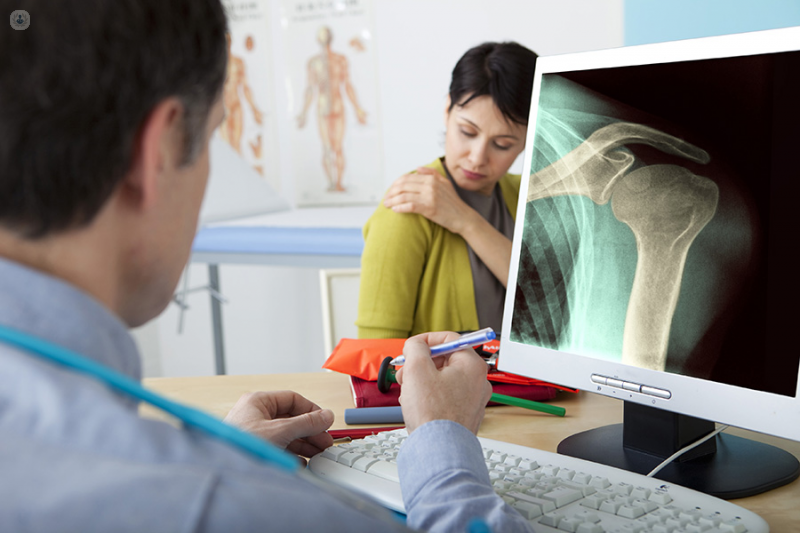Treating shoulder impingement with arthroscopic subacromial decompression surgery.
Escrito por:Arthroscopic subacromial decompression is a key-hole procedure carried out on the shoulder to treat impingement syndrome. We interviewed Mr Ali Al-Sabti about recovery time, costs and what to expect from the surgery

Arthroscopic subacromial decompression surgery is a day case procedure and done under general anaesthetic and nerve block. It treats impingement syndrome which is when the bones and tendons in the shoulder rub against each other when the arm is raised, causing pain. The surgical procedure clears bony spurs from the shoulder joint to allow the rotator cuff to move more freely, preventing friction and releasing the pain. Bone spur formation in the roof of the joint often causes pain in the rotator cuff and this can be treated with subacromial decompression.
What happens during a subacromial decompression?
The operation can take about an hour and is carried out under general anaesthetic and nerve block (an injection to turn off pain signals). The procedure is usually carried out through two or three 5mm puncture wounds, using a tube-like telescopic camera, known as an arthroscope and small surgical instruments.
The surgery involves releasing a ligament and shaving away part of the bone spurs and clavicle bones using a device called a shaver. The shaver removes any inflamed tissue and reduces irritation caused by bone spurs. Tears in ligaments, muscles and tendons as a result of shoulder impingement can also be repaired. Stitches are under the skin and do not need removing after the surgery, as they are dissolvable. Small plaster strips can be placed over the wounds.
How long is recovery time?
Generally, the patient can leave the hospital on the same day, after the anaesthesia has worn off. It’s recommended not to drive or operate machinery for the first 24 hours and that the patient has someone to stay with them for the first day, after the operation. Some patients may need to keep their arm in a sling for a few days after the operation.
Recovery from the surgery can last from six weeks to six months but many patients return to work or drive within two weeks. Patients may have pain and stiffness around the shoulder after surgery, for which they can take over-the-counter painkillers such as paracetamol.
Can exercises help to speed up recovery?
Physiotherapy should start as soon as possible after the surgical wounds have healed and exercises are given by the physiotherapist to help speed up recovery. These exercises can include stretching the muscles around your shoulder, strengthening exercises and exercises to improve overall movement.
How much does arthroscopic subacromial decompression cost?
Arthroscopic subacromial decompression costs approximately £4700 for self-paying patients as a fixed price procedure. For insured patients, the cost can vary, depending on insurance coverage. There is also the added cost of physical therapy sessions and over the counter pain relievers and prescription drugs to reduce inflammation that may be required after the surgery.
Are there alternatives to subacromial decompression surgery?
Before arthroscopic subacromial decompression is considered, a trial of conservative treatment is recommended including steroid joint injections, physiotherapy or anti-inflammatories. Subacromial decompression is recommended if other treatments haven’t worked. Athletes and people in physically demanding jobs are good candidates for the surgery.
If you are considering arthroscopic subacromial decompression surgery or would like more information about the procedure, consult a specialist to know more.


